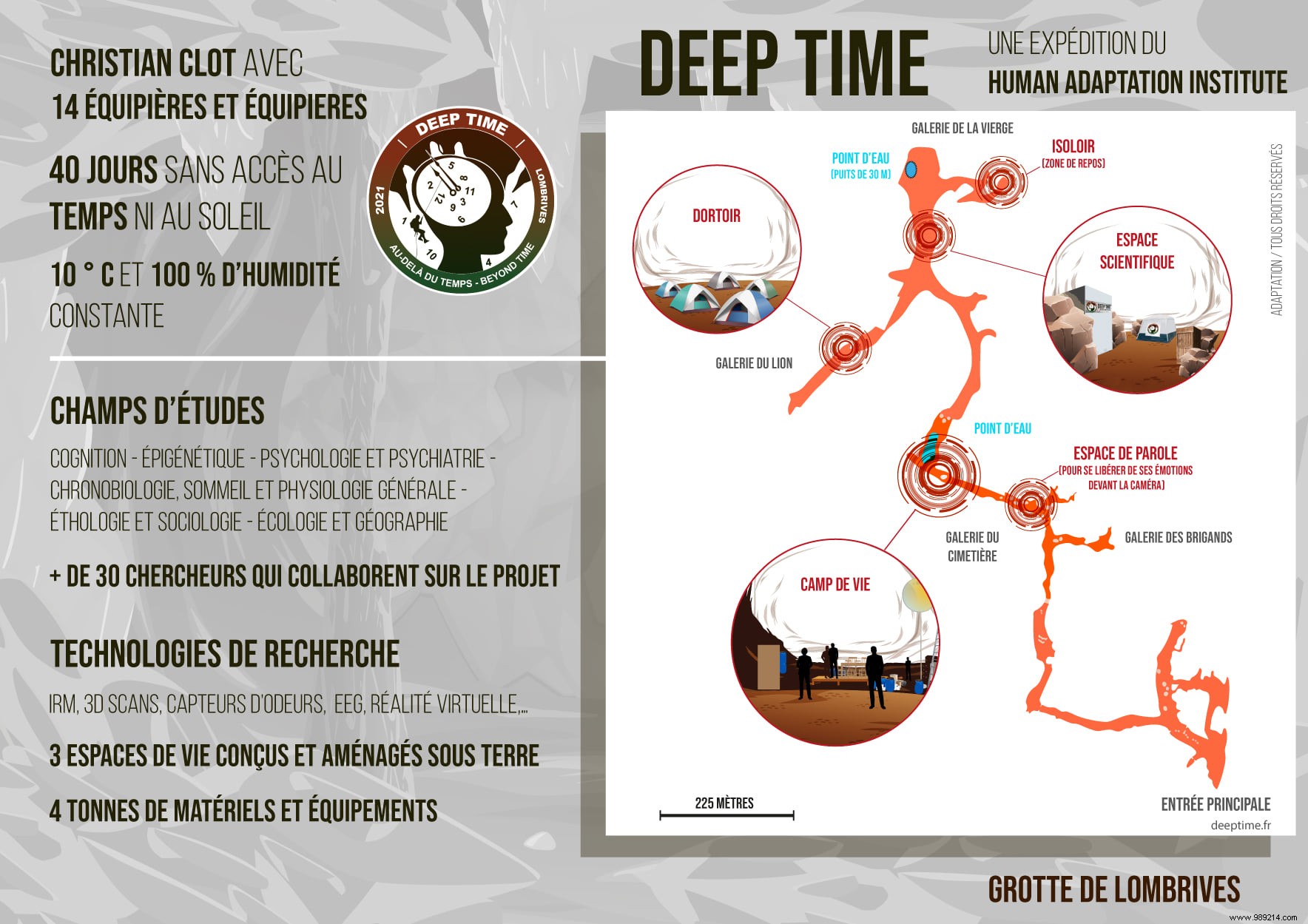A few days ago, the fifteen volunteers of the Deep Time project saw the light of day after forty days spent in a cave. Scientists will be able to begin to study the many data collected. Back on the objectives of this experience and on the first testimonies.
On March 14, 2021, fifteen volunteers aged 27 to 50 joined the Lombrives cave in Ussat (Ariège). Forty days later , on April 24, the team was finally able to see the light of day. Before departure, the head of mission Christian Clot explained that he wanted to find a way to respond to the impacts caused by confinement situations. Confinements such as those induced by the health crisis linked to Covid-19 indeed lead to a loss of spatio-temporal landmarks. Our ability to adapt as well as our emotions may have been abused during these difficult episodes.
Christian Clot's team stayed in the cave without a watch, phone or natural light. In addition, the conditions of this place are quite difficult with a temperature of 12°C and a humidity level of 95% . Let's also mention the fact that the volunteers had to use a pedal boat system to generate their own electricity and draw water from a depth of 45 m.

At the time of their exit, the volunteers were equipped with sunglasses to protect themselves from the radiant sky (and therefore the dazzling light) that awaited them. We will now have to analyze the many data collected during the experiment. Remember that the team was equipped with sensors measuring their body temperature as well as their cortisol and melatonin levels. The volunteers also wore an electroencephalogram to analyze their cognitive performance and sleep cycles, among others.
However, the scientists will mainly focus on one of the major challenges of this experiment, namely to assess the ability of the participants to evolve together in a new environment. Early reports indicate that everyone is doing well. However, the volunteers experienced a shift in their sleep cycle and not all have lived at the same pace.
To go further, you can follow the podcast on the Adaptation Institute YouTube channel, the first episode of which is available at the end of this article. Finally, GEO magazine will give the floor to Christian Clot during a live Instagram this Thursday, April 29 at 5 p.m.